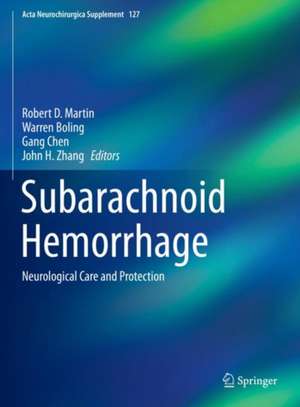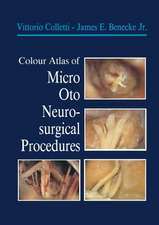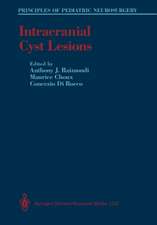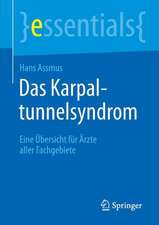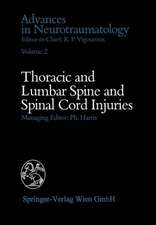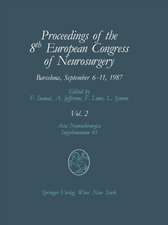Subarachnoid Hemorrhage: Neurological Care and Protection: Acta Neurochirurgica Supplement, cartea 127
Editat de Robert D. Martin, Warren Boling, Gang Chen, John H. Zhangen Limba Engleză Hardback – 29 aug 2019
Din seria Acta Neurochirurgica Supplement
- 5%
 Preț: 1798.83 lei
Preț: 1798.83 lei - 5%
 Preț: 1445.88 lei
Preț: 1445.88 lei - 5%
 Preț: 1102.31 lei
Preț: 1102.31 lei - 5%
 Preț: 1136.85 lei
Preț: 1136.85 lei - 5%
 Preț: 811.16 lei
Preț: 811.16 lei - 5%
 Preț: 1112.70 lei
Preț: 1112.70 lei - 5%
 Preț: 529.80 lei
Preț: 529.80 lei - 5%
 Preț: 791.25 lei
Preț: 791.25 lei - 5%
 Preț: 1303.26 lei
Preț: 1303.26 lei - 5%
 Preț: 410.88 lei
Preț: 410.88 lei - 5%
 Preț: 345.70 lei
Preț: 345.70 lei - 5%
 Preț: 1316.08 lei
Preț: 1316.08 lei - 5%
 Preț: 1452.28 lei
Preț: 1452.28 lei - 5%
 Preț: 1348.46 lei
Preț: 1348.46 lei - 5%
 Preț: 370.94 lei
Preț: 370.94 lei - 5%
 Preț: 376.22 lei
Preț: 376.22 lei - 5%
 Preț: 715.00 lei
Preț: 715.00 lei - 5%
 Preț: 364.17 lei
Preț: 364.17 lei - 5%
 Preț: 365.82 lei
Preț: 365.82 lei - 5%
 Preț: 366.91 lei
Preț: 366.91 lei - 5%
 Preț: 384.08 lei
Preț: 384.08 lei - 5%
 Preț: 397.16 lei
Preț: 397.16 lei - 5%
 Preț: 367.64 lei
Preț: 367.64 lei - 5%
 Preț: 373.12 lei
Preț: 373.12 lei - 5%
 Preț: 993.11 lei
Preț: 993.11 lei - 5%
 Preț: 394.07 lei
Preț: 394.07 lei - 5%
 Preț: 364.74 lei
Preț: 364.74 lei - 5%
 Preț: 1095.90 lei
Preț: 1095.90 lei - 5%
 Preț: 1824.06 lei
Preț: 1824.06 lei - 5%
 Preț: 1119.31 lei
Preț: 1119.31 lei - 5%
 Preț: 1312.09 lei
Preț: 1312.09 lei - 5%
 Preț: 1119.68 lei
Preț: 1119.68 lei - 5%
 Preț: 1331.76 lei
Preț: 1331.76 lei - 5%
 Preț: 1430.72 lei
Preț: 1430.72 lei - 5%
 Preț: 1405.49 lei
Preț: 1405.49 lei - 5%
 Preț: 1418.48 lei
Preț: 1418.48 lei - 5%
 Preț: 392.25 lei
Preț: 392.25 lei - 5%
 Preț: 1335.44 lei
Preț: 1335.44 lei - 5%
 Preț: 1375.20 lei
Preț: 1375.20 lei
Preț: 920.82 lei
Preț vechi: 969.29 lei
-5% Nou
176.19€ • 184.46$ • 145.79£
Carte tipărită la comandă
Livrare economică 01-07 aprilie
Specificații
ISBN-10: 3030046141
Pagini: 300
Ilustrații: X, 235 p. 70 illus., 36 illus. in color.
Dimensiuni: 210 x 279 mm
Greutate: 0.77 kg
Ediția:1st ed. 2020
Editura: Springer International Publishing
Colecția Springer
Seria Acta Neurochirurgica Supplement
Locul publicării:Cham, Switzerland
Cuprins
Chapter 1: Vasospasm: a personal odyssey
Fumi Nakano, Lei Liu, Fumihiro Kawakita, Yoshinari Nakatsuka, Hirofumi Nishikawa, Takeshi Okada, Masato Shiba, Hidenori Suzuki
Chapter 21: Development of a Delayed Cerebral Infarction Load Scoring System (DCI Score)
Notă biografică
Robert D. Martin, M.D. is Professor of the Floyd S. Brauer Chair in Anesthesiology at Loma Linda University, Loma Linda, California and has held this position since 2004. He is a member of the Board of Trustees of Loma Linda University. He is Board Certified in Pain Medicine and Anesthesiology. His primary clinical interests have been in the areas of Cardiac Anesthesiology and Pain. Dr. Martin was a pioneer in developing anesthesiology protocols for infant heart transplantation.
Warren Boling, M.D., FRCSC, FRACS is Professor, Program Director, and Chairman of the Department of Neurosurgery at Loma Linda University, Loma Linda, CA. He is the past president of the Society of Brain Mapping and Therapeutics and a member of the SBMT Board of Directors. He is a member of the Faculty Medical Group of Loma Linda University Board of Directors. Dr Boling is an academic neurosurgeon and investigator, his primary interests are in the research and neurosurgical aspects of brain imaging, epilepsy, neuro-oncology, and international medicine. He is an expert on the fine topographic detail of human neuro-anatomy, which has led to the identification of anatomical and functional relationships in the human brain.
Gang Chen, M.D., Ph.D. is professor and vice Director of the Department of Neurosurgery at The First Affiliated Hospital of Soochow University, Suzhou, China. He also severs as Director of the Translational Stroke Research Team, and as Chair of the Division of Science & Technology. Dr. Chen’s research focuses on subarachnoid hemorrhage (SAH), which is a violent disease affecting the human health. In SAH, Dr. Chen has put forward “Right time, Right therapy” therapeutic principle. He continues to identify novel regulatory mechanisms in candidate proteins such as CyPA/CD147, neurexin-1β/neuroligin-1, etc., and to evaluate the current development, challenges and potential clinical translation of these researches. Dr. Chen’s research efforts have been supported by grants from the National Natural Science Foundation of China.
John H. Zhang, M.D., Ph.D. (Editor) Loma Linda University Medical School, Loma Linda, CA, is currently a Professor of Anesthesiology, Neurosurgery, Neurology, Basic Sciences (Physiology & Pharmacology), Pathology & Human Anatomy, and Nursing at Loma Linda University Medical Center. He also serves as Director of the Center for Brain Hemorrhage Research, as Vice-Chair of the Department of Basic Sciences (Chief of Division of Physiology), as Director of the Physiology Graduate Training Program, and as Director of the Basic Science Research Division in Anesthesiology. Dr. Zhang’s research efforts have been supported by grants from the American Heart Association, National Institute of Health, and Department of Defense as well as other regional foundations and industry. Dr. Zhang has published more than 600 peer-reviewed articles and has been invited to speak in meetings, seminars, and grand rounds more than 300 times.
Textul de pe ultima copertă
This book highlights the latest developments in acute and delayed neurovascular injury studies including delayed cerebral vasospasm, early brain injury, micro-circulation compromise, spreading cortical depolarization, neuroinflammation, and long-term cognitive dysfunctions after subarachnoid hemorrhage. About 32 chapters cover original presentations from the 14th international conference on neurovascular events after subarachnoid hemorrhage, held in Los Angeles in October 2017. Neurosurgeons, neurologists, and neuro-ICU practitioners discuss clinical observations, new pilot treatments, clinical trials, academic and industrial interactions, including surgical and endovascular approaches, brain injury monitoring, new developments in brain imaging, ICU management, early brain injury scales and management, counter cortical depolarization management and anti-inflammation management. In addition, animal models used to study acute and delayed neurovascular events, the basic mechanisms of vascular, neuronal, and CSF physiology, new experimental treatment strategies, new frontiers in the treatment of neurovascular injuries, and new research directions are discussed.
Caracteristici
Covers new pilot treatments, clinical trials, academic and industrial interactions
Discusses animal models used to study acute and delayed neurovascular events
Descriere
This book highlights the latest developments in acute and delayed neurovascular injury studies including delayed cerebral vasospasm, early brain injury, micro-circulation compromise, spreading cortical depolarization, neuroinflammation, and long-term cognitive dysfunctions after subarachnoid hemorrhage. About 32 chapters cover original presentations from the 14th international conference on neurovascular events after subarachnoid hemorrhage, held in Los Angeles in October 2017. Neurosurgeons, neurologists, and neuro-ICU practitioners discuss clinical observations, new pilot treatments, clinical trials, academic and industrial interactions, including surgical and endovascular approaches, brain injury monitoring, new developments in brain imaging, ICU management, early brain injury scales and management, counter cortical depolarization management and anti-inflammation management. In addition, animal models used to study acute and delayed neurovascular events, the basic mechanisms of vascular, neuronal, and CSF physiology, new experimental treatment strategies, new frontiers in the treatment of neurovascular injuries, and new research directions are discussed.
